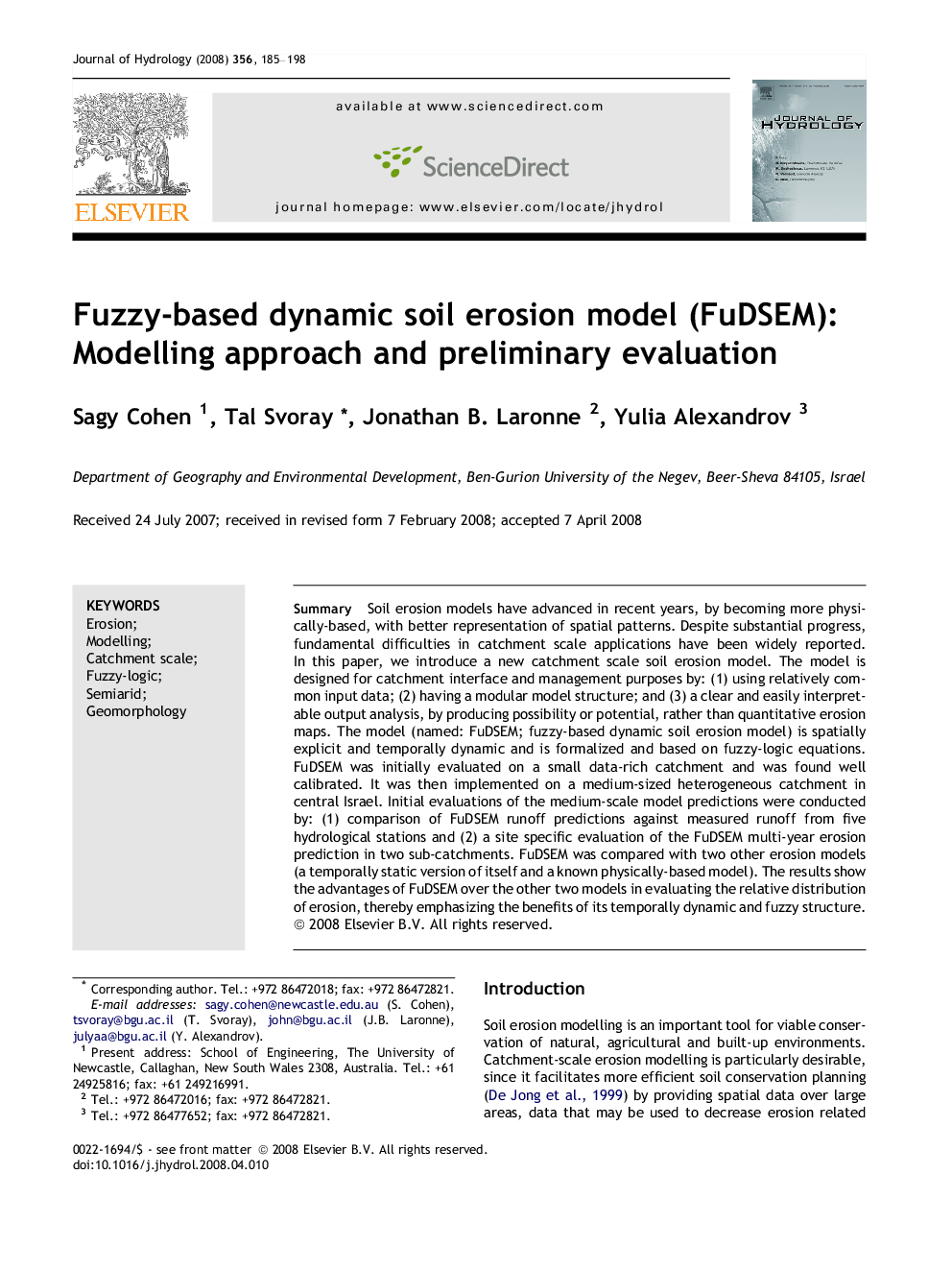| Article ID | Journal | Published Year | Pages | File Type |
|---|---|---|---|---|
| 4579458 | Journal of Hydrology | 2008 | 14 Pages |
SummarySoil erosion models have advanced in recent years, by becoming more physically-based, with better representation of spatial patterns. Despite substantial progress, fundamental difficulties in catchment scale applications have been widely reported. In this paper, we introduce a new catchment scale soil erosion model. The model is designed for catchment interface and management purposes by: (1) using relatively common input data; (2) having a modular model structure; and (3) a clear and easily interpretable output analysis, by producing possibility or potential, rather than quantitative erosion maps. The model (named: FuDSEM; fuzzy-based dynamic soil erosion model) is spatially explicit and temporally dynamic and is formalized and based on fuzzy-logic equations. FuDSEM was initially evaluated on a small data-rich catchment and was found well calibrated. It was then implemented on a medium-sized heterogeneous catchment in central Israel. Initial evaluations of the medium-scale model predictions were conducted by: (1) comparison of FuDSEM runoff predictions against measured runoff from five hydrological stations and (2) a site specific evaluation of the FuDSEM multi-year erosion prediction in two sub-catchments. FuDSEM was compared with two other erosion models (a temporally static version of itself and a known physically-based model). The results show the advantages of FuDSEM over the other two models in evaluating the relative distribution of erosion, thereby emphasizing the benefits of its temporally dynamic and fuzzy structure.
